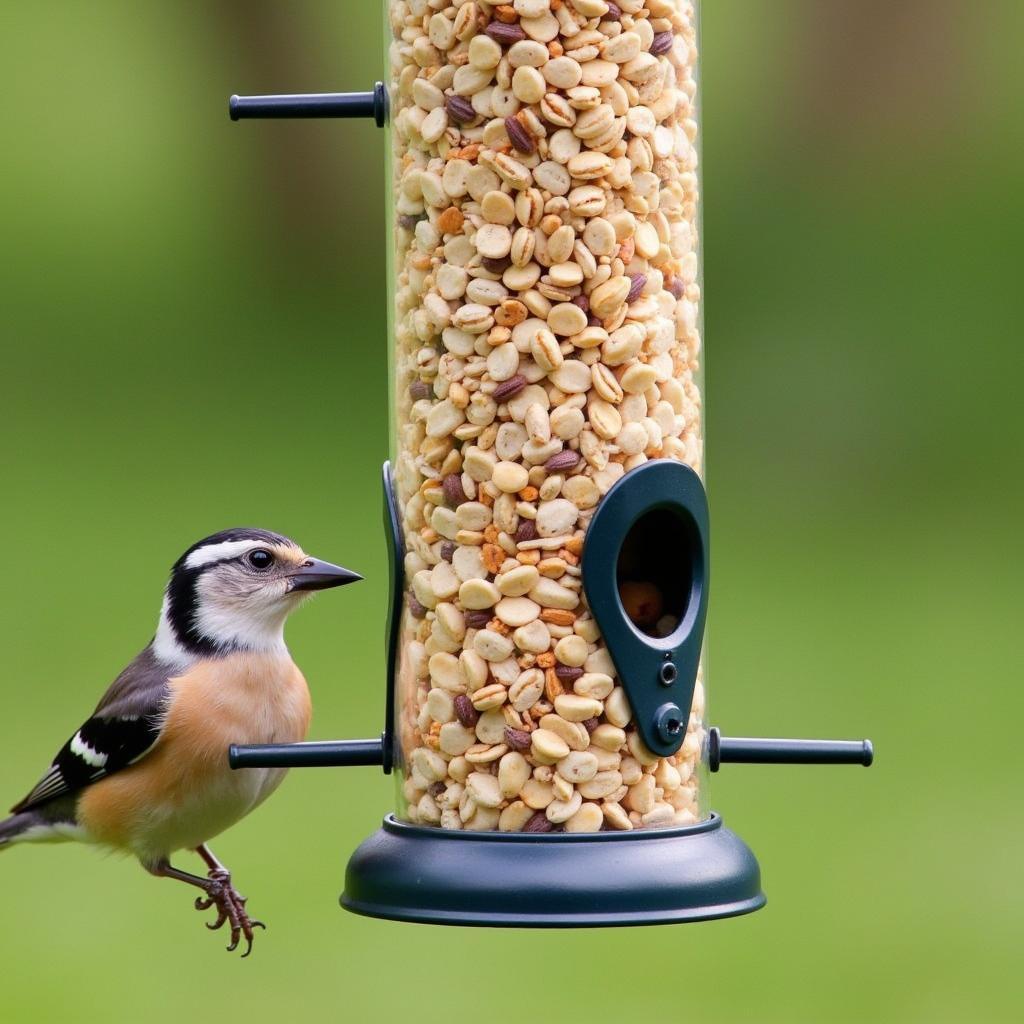Bird Food Hanging is a great way to attract a variety of birds to your backyard. By providing a reliable source of food, you can enjoy the beauty and songs of these feathered friends year-round. Whether you’re an experienced birder or just starting out, this comprehensive guide will provide you with everything you need to know about bird food hanging.
Choosing the Right Bird Feeder
Selecting the appropriate bird feeder is crucial for attracting the desired bird species. Different feeders cater to different types of birds and food preferences.
- Tube feeders: Ideal for small birds like finches, chickadees, and sparrows, these feeders dispense small seeds through multiple feeding ports.
 Tube bird feeder filled with seeds
Tube bird feeder filled with seeds
-
Hopper feeders: With a larger seed capacity, hopper feeders attract larger birds such as cardinals, grosbeaks, and jays.
-
Platform feeders: Offering a versatile feeding platform, these feeders accommodate various food types, including seeds, fruits, and suet, attracting a wide range of birds.
-
Suet feeders: Specifically designed for holding suet cakes, these feeders provide high-energy food during the colder months, attracting woodpeckers, nuthatches, and chickadees.
Selecting the Best Bird Food
Just like feeders, different bird foods attract different species. Consider the dietary needs and preferences of the birds you want to attract.
-
Sunflower seeds: A popular choice among many bird species, sunflower seeds are high in fat and provide essential energy.
-
Nyjer seeds: These tiny, oil-rich seeds are a favorite of finches, particularly goldfinches.
-
Millet: This small, round seed is enjoyed by ground-feeding birds like sparrows, juncos, and doves.
-
Suet: A high-calorie food source made from animal fat, suet is especially beneficial during winter, providing birds with much-needed energy.
Where to Hang Your Bird Feeder
The location of your bird feeder plays a significant role in attracting birds and ensuring their safety.
-
Choose a visible location: Birds need to be able to spot the feeder easily.
-
Provide shelter: Place the feeder near trees or shrubs where birds can take cover if they feel threatened.
-
Avoid windows: To prevent bird collisions, hang feeders at least 10 feet away from windows.
Maintaining Your Bird Feeder
Regular cleaning and maintenance of your bird feeder are essential for the health of the birds.
-
Clean feeders regularly: Remove old seed, debris, and droppings to prevent the spread of diseases.
-
Disinfect feeders periodically: Use a solution of one part bleach to nine parts water to kill bacteria.
-
Provide fresh water: Birds need access to clean water for drinking and bathing.
Enjoying Your Feathered Visitors
Bird food hanging offers a wonderful opportunity to connect with nature and observe birds up close. Here are some tips for enhancing your birdwatching experience:
-
Keep a safe distance: Avoid disturbing the birds while they are feeding.
-
Use binoculars: Binoculars will help you get a closer look at the birds without startling them.
-
Keep a field guide handy: A field guide will help you identify the different bird species visiting your feeder.
Conclusion
Bird food hanging is a rewarding activity that allows you to attract and observe a variety of bird species in your own backyard. By following the tips outlined in this guide, you can create a welcoming environment for your feathered friends and enjoy the beauty and songs they bring to your outdoor space. So, start hanging those feeders and get ready to experience the joy of birdwatching!